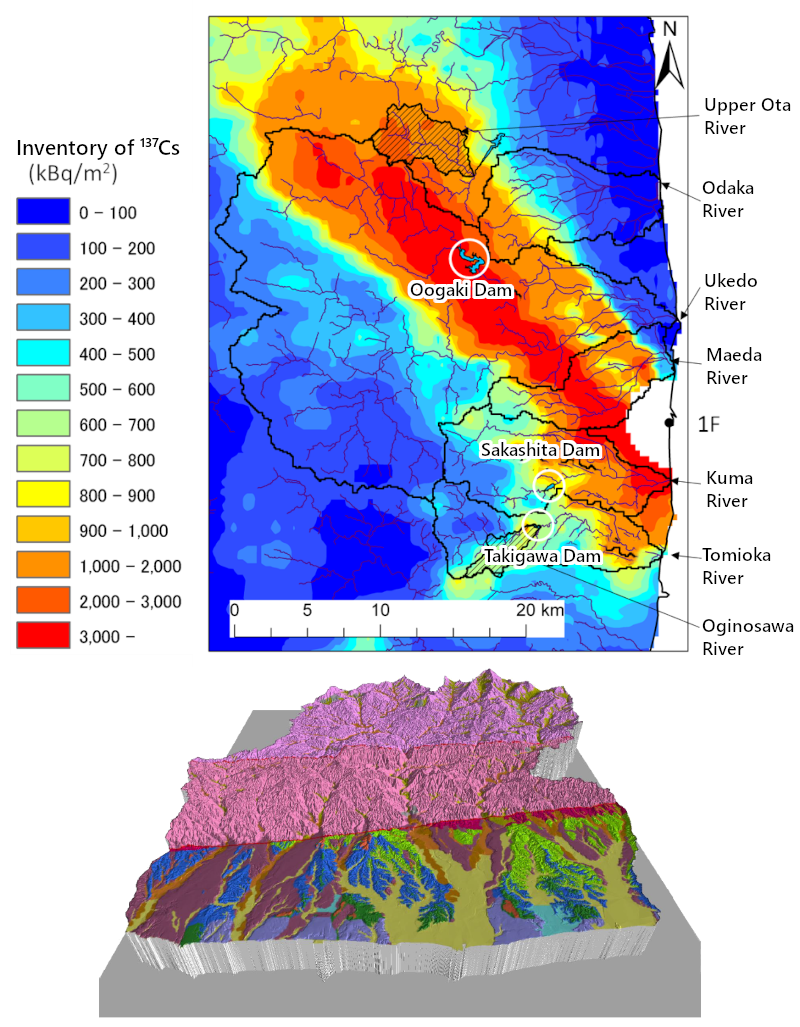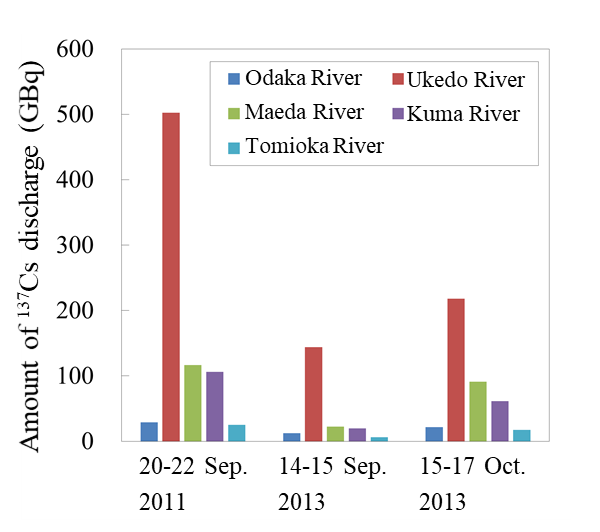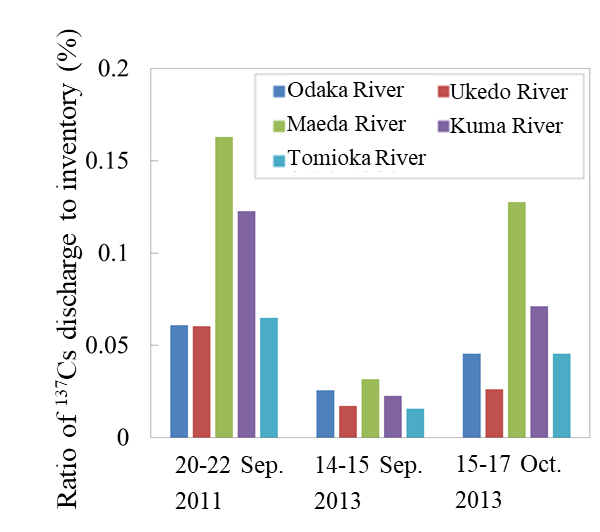Radioactivity Dynamics in River System
(2017)
QDose the radiocesium discharge ratio from rivers depend on the local environment?
AThe ratio of 137Cs discharge to the inventory in the catchment is lower at rivers that have dams and higher at rivers whose basin has highly contaminated paddy field.
137Cs discharge during heavy rainfall events from the five coastal rivers were simulated by GETFLOWS. Fig. 1 and 2 show the amount of 137Cs discharge and the ratio of discharge (discharge amount/inventory), respectively.
- The discharge amount of 137Cs from the Ukedo river is the highest among the five rivers. It is due to the largest catchment area and the largest inventory of 137Cs (Fig.1).
- However, the ratio of 137Cs discharge amount to the inventory of the Ukedo river catchment is the lowest (Fig.2). It is due to the existence of a dam in the middle reach that prevents sediment and radiocesium to flow downstream.
- In contrast, the ratio of 137Cs discharge from the Maeda river shows the highest. It doesn’t have a dam. The fact that the highly contaminated area is paddy field with high erodibility also results in the high discharge ratio (Fig.2).

Fig.1 Five river basins near the Fukushima Daiichi Nuclear Power Station (Odaka River, Ukedo River, Maedagawa River, Kuma River, Tomioka River) and the upper reaches of the Ota River, Inventory of 137Cs deposits in the Oginozawa basin in the Tomioka River basin
(4th Aircraft Monitoring Data, November 2011)
-

Fig.2 Amount of 137Cs discharge
-

Fig.3 Ratio of 137Cs discharge to inventory
Related articles
- Will radioactive contamination continue to accumulate in reservoirs due to the inflow of radioactive cesium from rivers? 【Effect of the upstream dam on 137Cs accumulation in the riservoir beds】
- Will radioactive contamination continue to accumulate in reservoirs due to the inflow of radioactive cesium from rivers? 【Technology for prediction of the future concentration of 137Cs】
- How do rainfalls affect turbidity and radioactive cesium concentrations in river water? 【Example of analysis】
